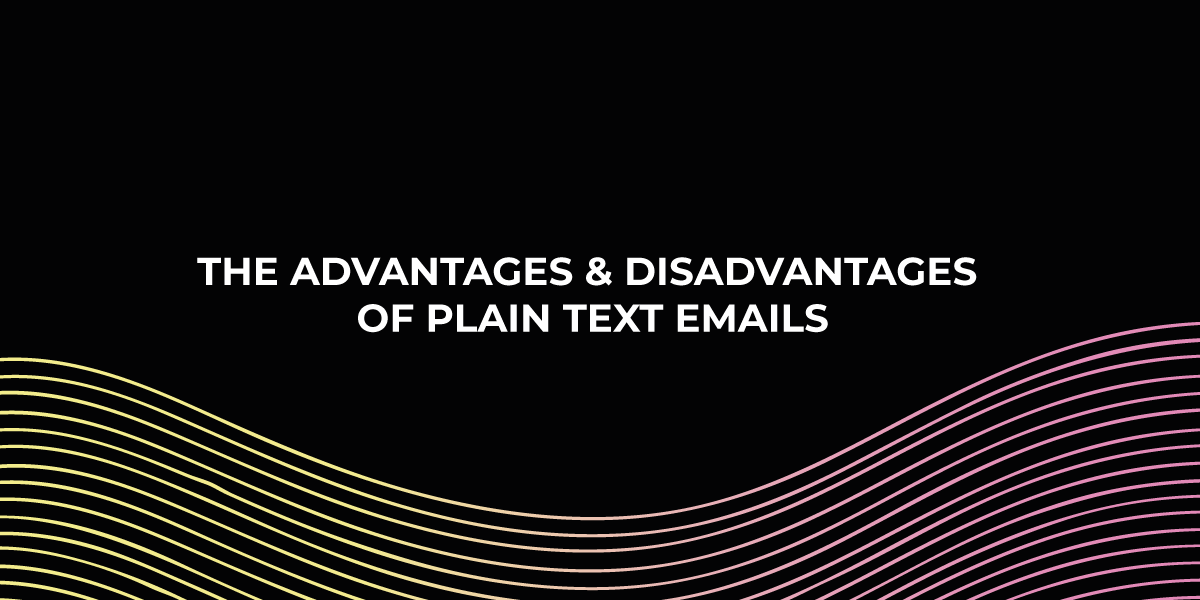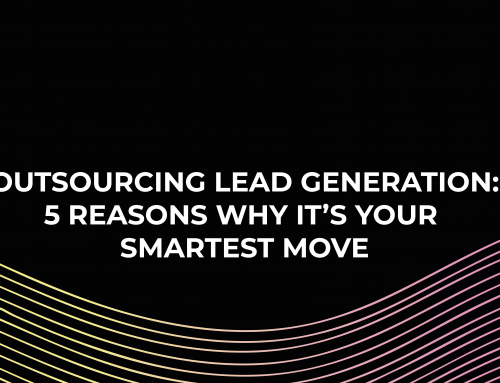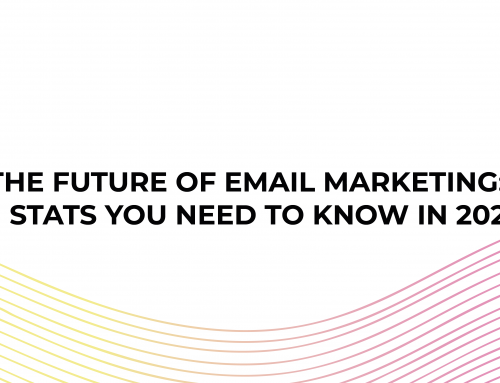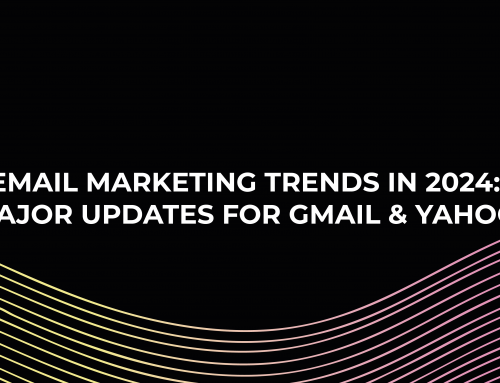Email marketers tend to gravitate towards flashy, ostentatious HTML emails. We’re talking lots of different fonts and bright colours, unmissable call-to-action buttons, and now videos and GIFs.
The rationale behind it is understandable; your emails are battling against so many other emails to earn clicks. You may as well use every weapon in your arsenal.
So, this may sound counterintuitive, but sometimes it’s worthwhile to strip away all the bells and whistles, keep it simple, and send out a plain text email.
Yes, plain text. Just black text on a white background. This post will examine the pros and cons of sending plain text emails.
The pros of plain text marketing emails.
1. Higher click-through rates.
This may strike you as surprising, but it is really the case. Study after study has found that plain text emails perform better than HTML.
If this does surprise you, you are not alone.
A survey found roughly two-thirds of people believe they prefer HTML emails to plain text and prefer mostly images to mostly text. But the studies suggest otherwise.
Here is a roundup of the studies on plain text email versus HTML.
- In every single A/B test, the simpler designed email won. The emails with fewer HTML elements won with statistical significance.
- Plain text emails had a 17% higher unique CTR and a 21% higher click-to-open rate.
- In an A/B test of 100,000 users, a text version of an email brought 194.5% more visitors to the website than an image-heavy version—and drew in 303% more revenue.
So the question is, why is the plain text version so much more effective?
2. Plain text emails feel more authentic and personal.
In his book, The Boron Letters, esteemed copywriter Gary Halbert, discusses the concept of people’s “A pile” and “B pile” of mail (although it is also applicable to emails).
He explains that people sort the messages they receive into two categories.
- The “A pile” contains things that are personal or appear personal. Messages from loved ones and work colleagues fall into this category.
- The “B pile” is all the commercial stuff we get – cold requests, people asking for things, and marketing emails.
People will definitely read the messages in the “A Pile” – it is urgent and impactful and means something to them. Whereas, they may read some of the stuff in the “B pile” if it catches their eye in the right way and they’re not preoccupied with something else.
To bring it back to plain text emails, yes, they’re marketing emails, but their personal nature means they would fall into the “A pile”. They’re written in a first-person, colloquial fashion and usually signed by an actual person from the company. Plain text emails capture some of that authentic, personal charm.
3. Plain text encourages more two-way communication.
Because of their personal and authentic tone, people feel more comfortable interacting with plain text emails.
This is particularly beneficial for B2B businesses as plain text email allows you to adopt a personalised, human approach to your sales prospecting and nurturing. While not as eye-grabbing as their HTML counterparts, people like receiving emails that feel as though they came from a real human being rather than an automated bot.
If you want to spark conversations with customers or prospects, plain text email is best suited for this.
4. Plain text has better deliverability, compatibility, and readability.
It does not matter what is inside your email if it does not arrive there. In order to be effective, your marketing emails need to reach your subscriber’s inboxes.
Most of your HTML emails will. But your plain text emails almost definitely will. One study found they have a 100% deliverability rate!
But even beyond deliverability, plain text emails eliminate many of the other potential problems your subscribers could have in receiving and reading your emails.
The file sizes of plain text emails are tiny, so no matter how slow the person’s internet connection is, your emails will reach them. Plain text emails are inherently responsive, as the text wraps to fit any screen so that the emails look attractive on every screen size and device.
On the other hand, HTML emails can appear cluttered; different things can catch a person’s eye, distracting them from the product or service you’re trying to sell. With plain text email, there is no distracting content; the person simply reads from top to bottom.
The cons of plain text marketing emails.
1. No visual appeal
It is hard to sell something online without a picture. At least 3/4 of online shoppers need a picture to decide whether to buy something, and more than 4/5 rank product images as a critical factor in influencing their purchasing. With plain text emails, you lose out on that crucial marketing tool.
2. Less tracking and measuring.
One of the best parts of email marketing is it’s incredibly measurable. You can get accurate and detailed statistics on every part of the process, from delivery to open to clicks to revenue. With plain text, you lose out on a little of that as the plain text emails don’t allow you to place a tracking pixel, making it slightly more difficult to track your open rate accurately.
3. Can be considered to look less professional.
There have been various studies comparing HTML and plain text emails. Many of these studies have found that plain text emails are more effective than HTML. However, with HTML emails, people know a big brand is sending the email with a marketing team behind it. In contrast, a plain text email can look amateurish.
Final takeaways.
While plain text emails may seem unnecessary when you have a myriad of HTML tools available, there’s a good case for why you shouldn’t dismiss them.
- Plain text emails have shown higher CTRs in study after study.
- They feel more authentic and personal, which can help build a relationship with a customer.
- They encourage more two-way communication.
- And they have universal deliverability, compatibility, and readability.
As with most things, plain text emails have downsides, but there are ways to make them more effective. You can read more about them in our recent blog.




